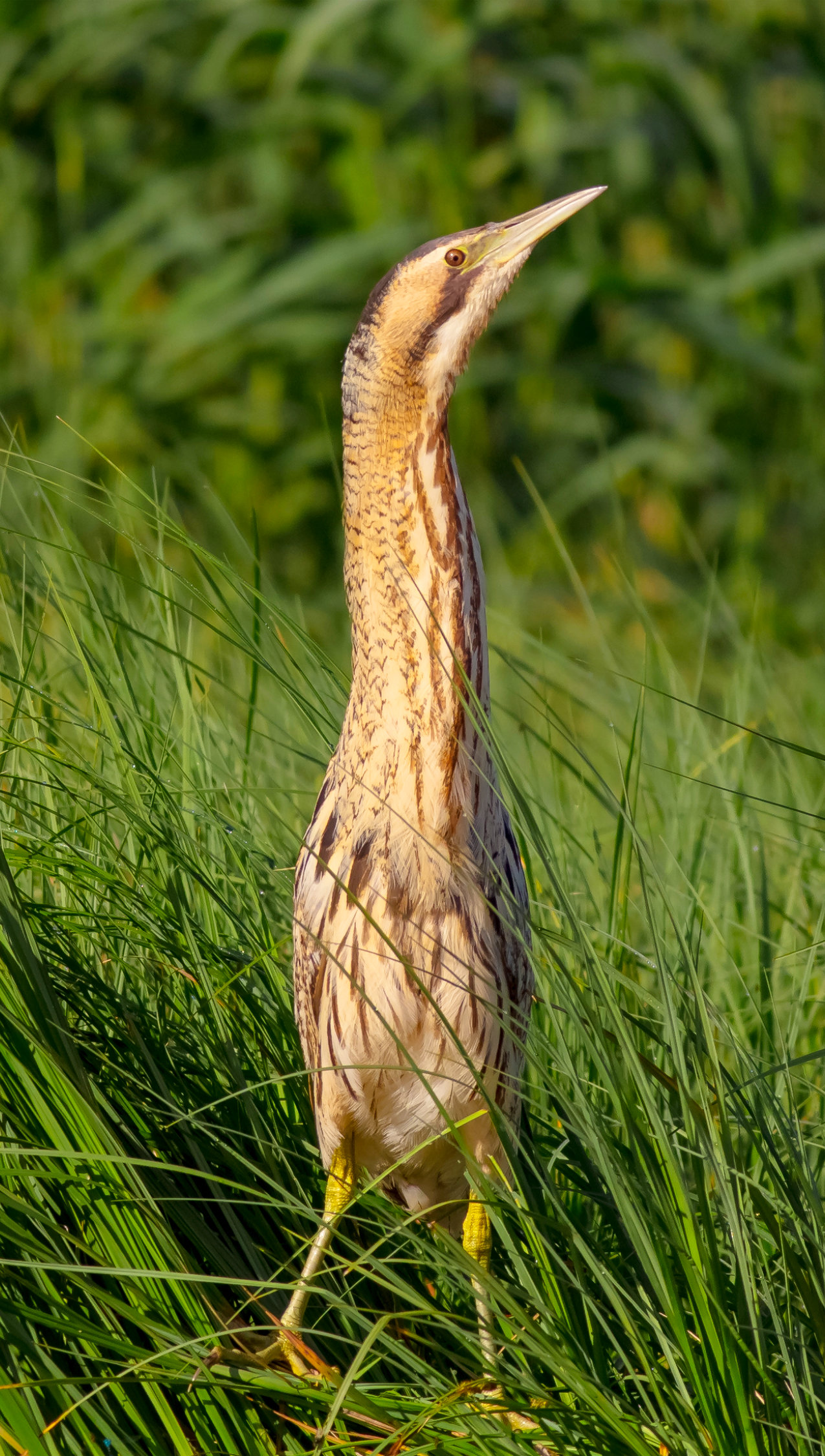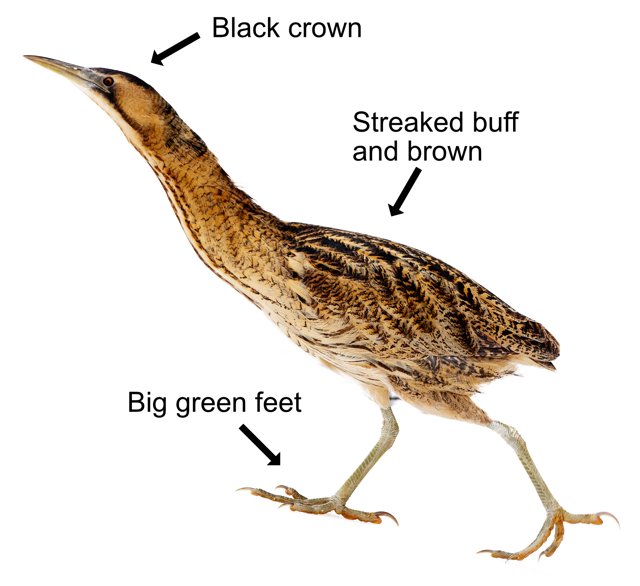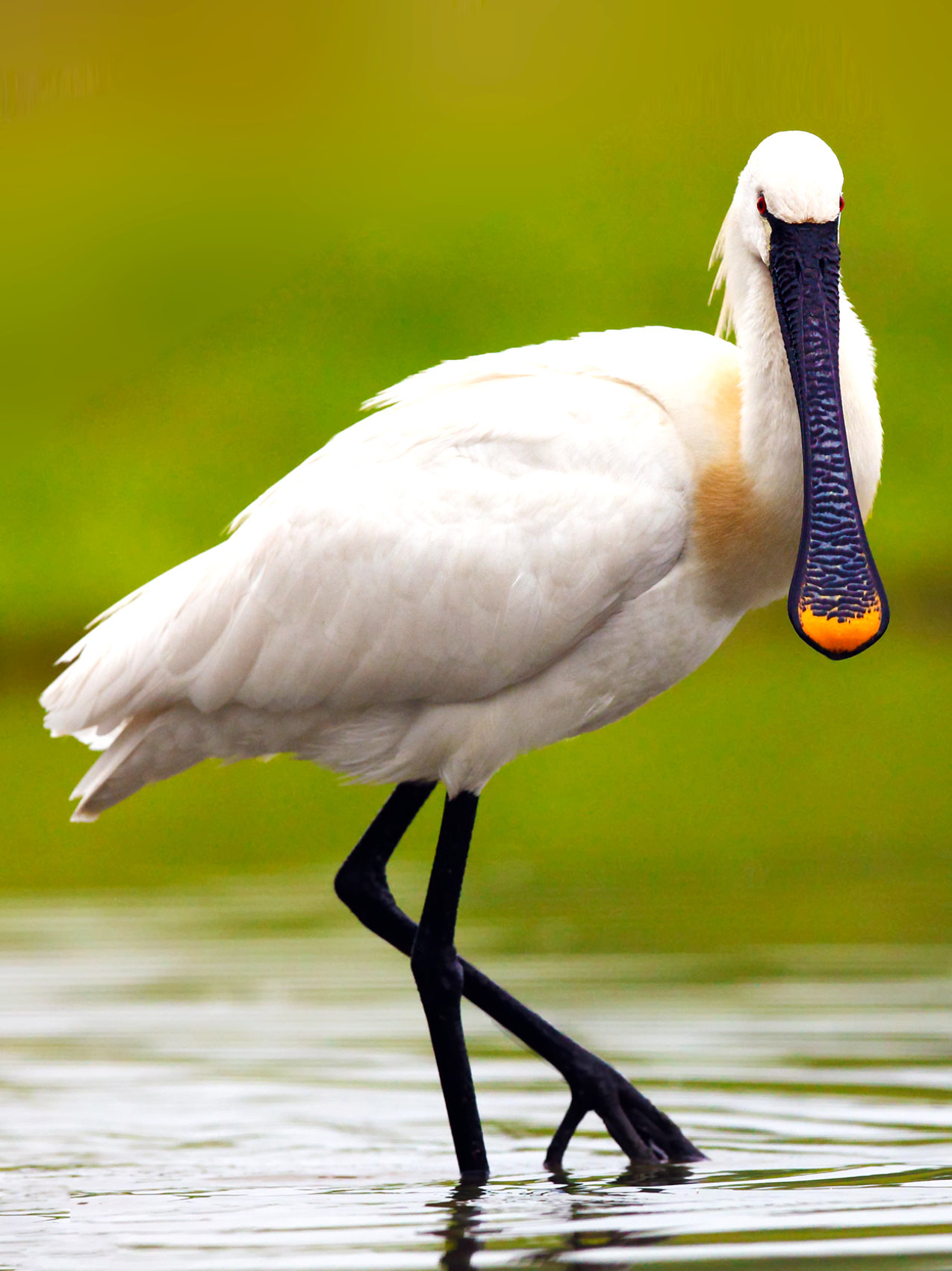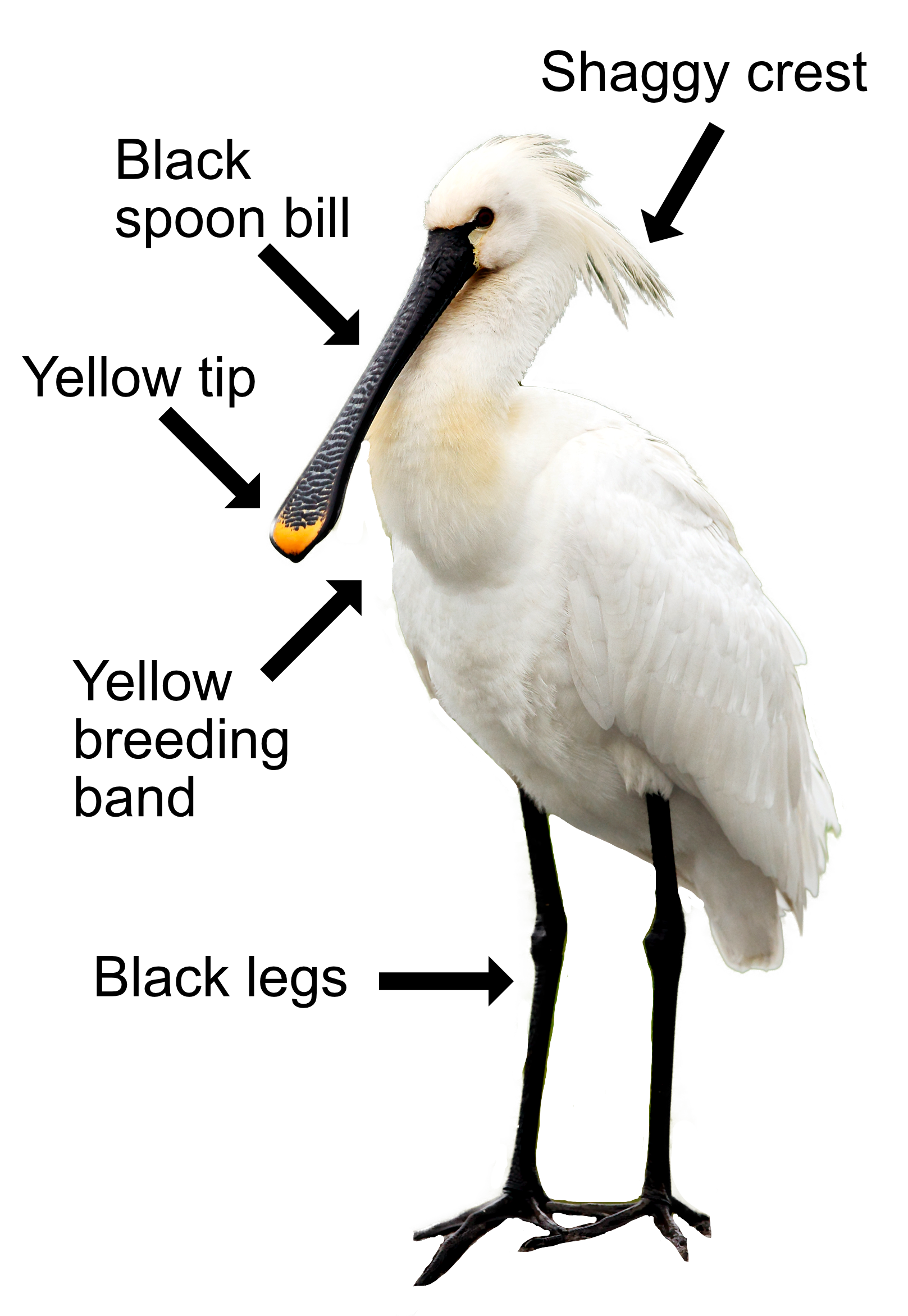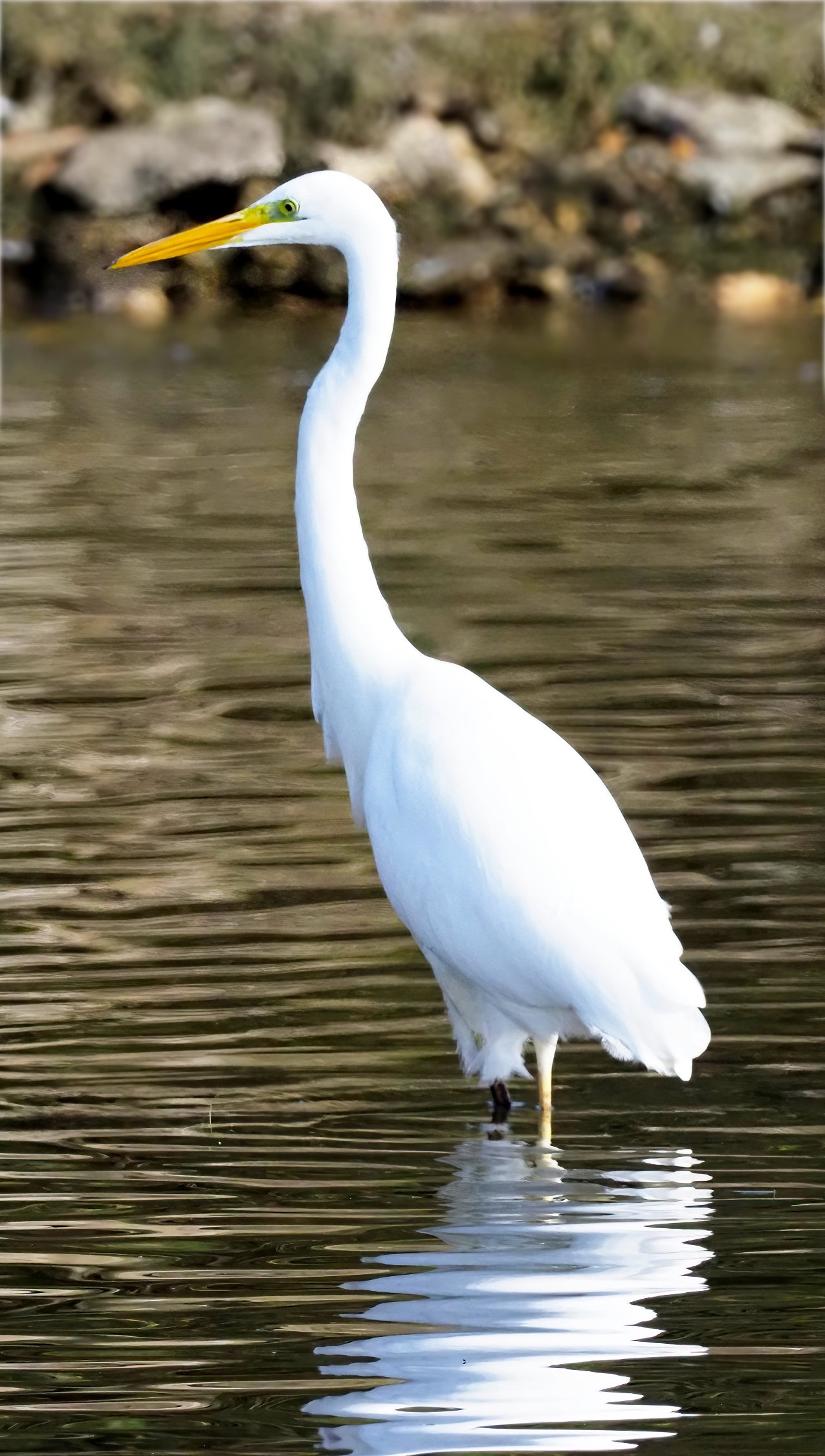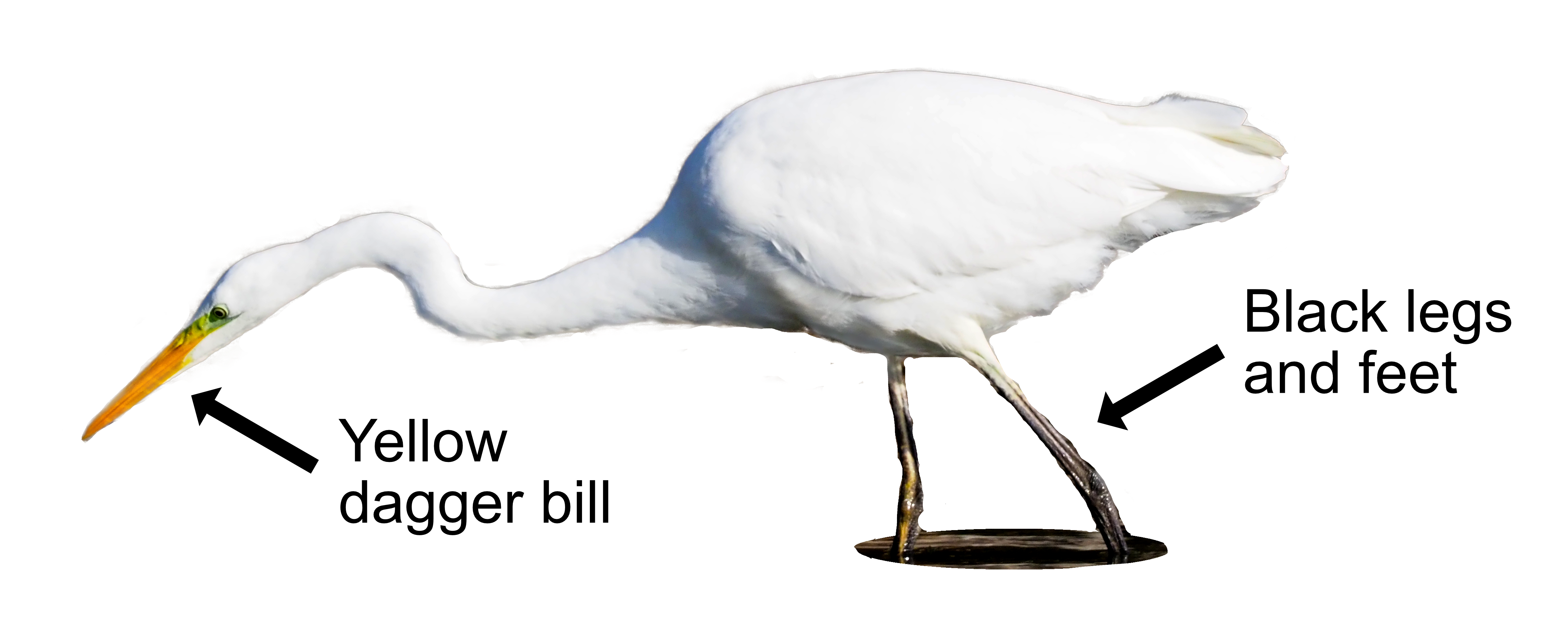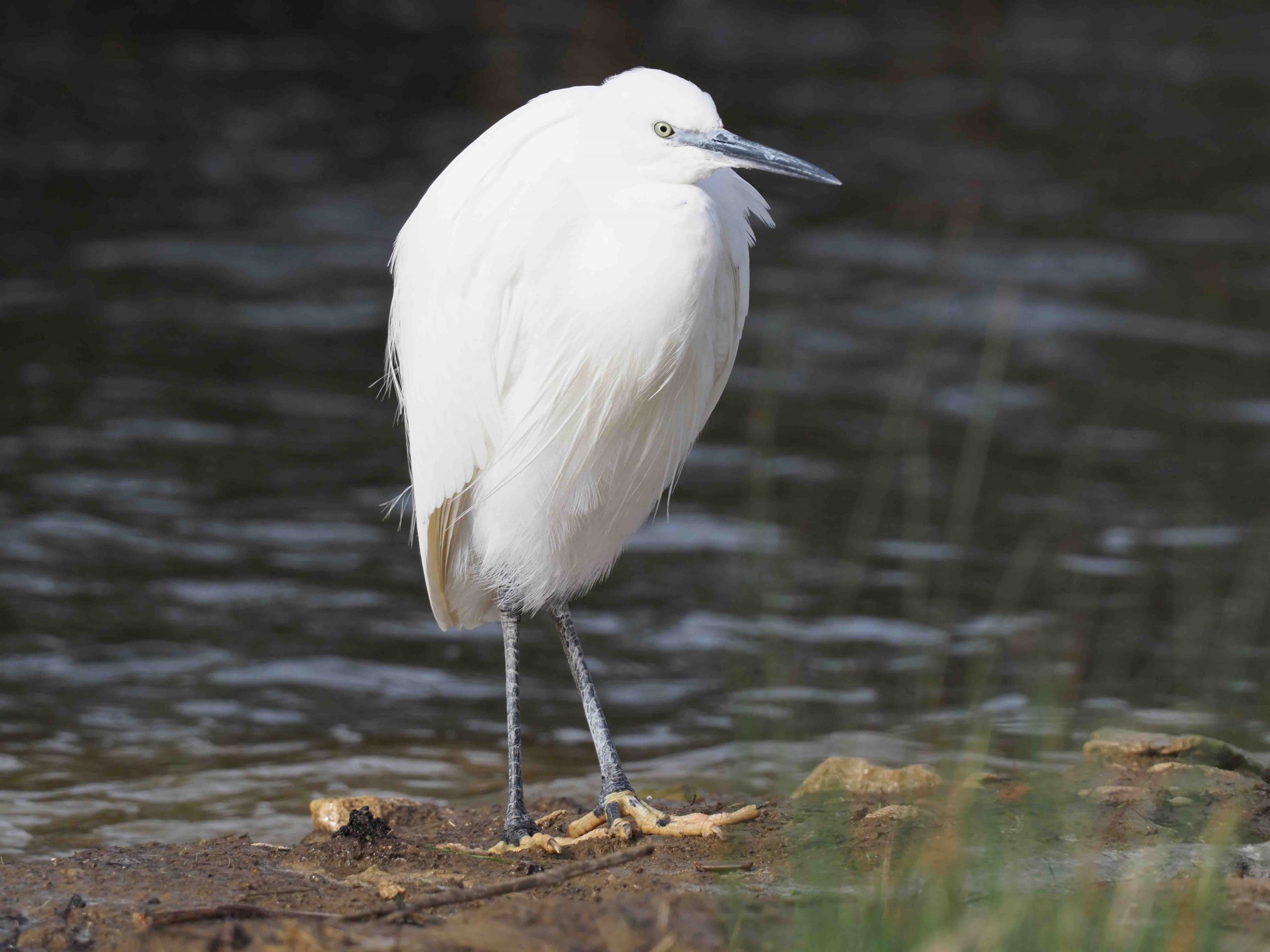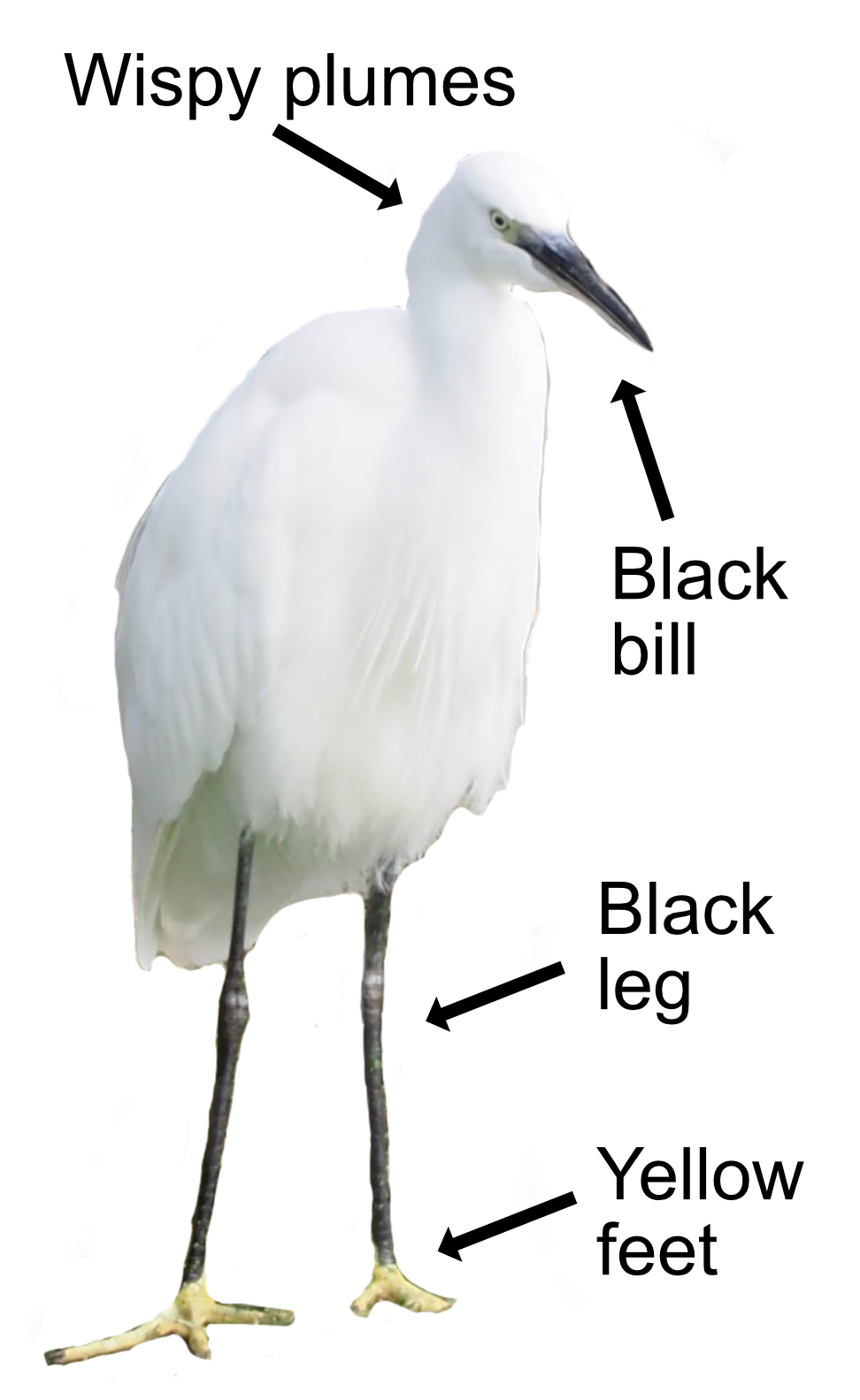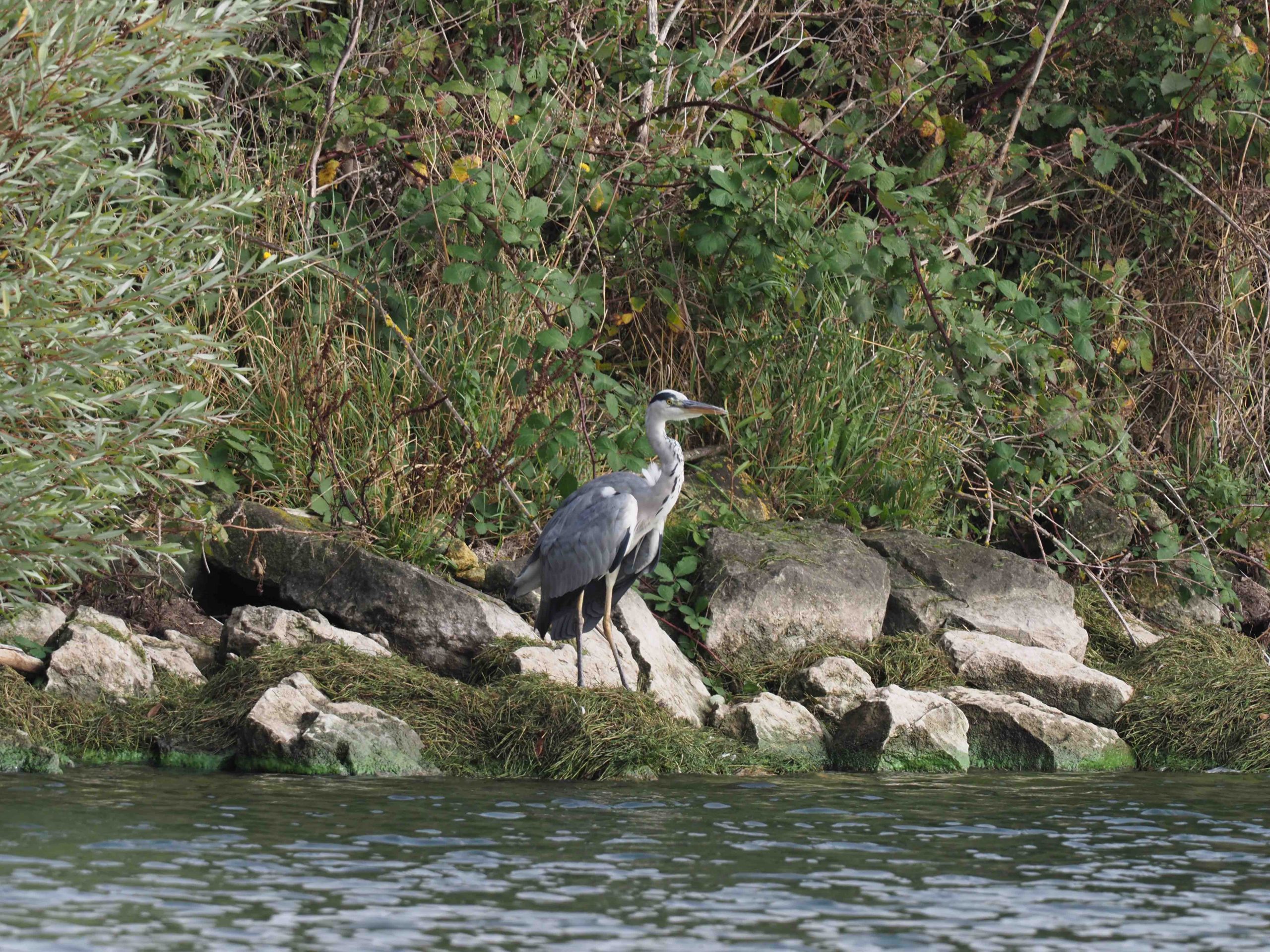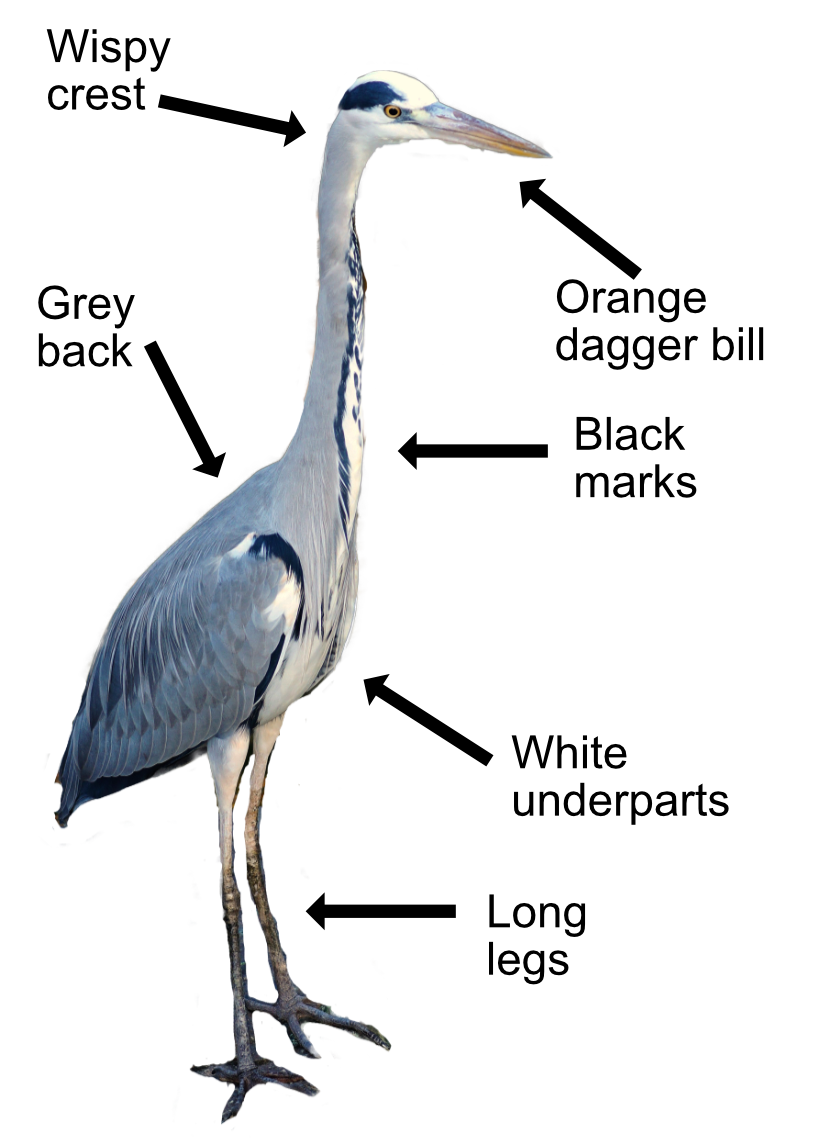
The Cattle Egret is a small Heron that, as its name suggests, is usually found near grazing animals. Only a few decades ago, Cattle Egrets were rare visitors to the UK, until a large influx over the winter of 2007/2008 saw over 200 birds arrive, mostly in south-west England. Numbers have been increasing ever since.
Adult Cattle Egrets in non-breeding plumage are pure white with dark legs and sturdy yellow bills. They have a relatively short, thick neck and a hunched posture, looking stockier than a Little Egret. In breeding plumage, they have orange-buff plumes creating patches on their back, breast, and head. Their bills become more orange and they have reddish-orange legs. Youngsters start with black bills that turn yellow in the first year.

Cattle Egrets follow grazing animals and catch the insects and small vertebrates that are disturbed by them. They will even remove ticks and flies from cattle and eat them. The positioning of their eyes gives them binocular vision, which is great for catching insects, but, because of this, means they can't feed in water like other Herons.
They nest in colonies, usually near bodies of water and often with other wading birds. Each breeding male establishes a territory and puts on an elaborate courtship display, spreading his wings and prancing from foot to foot. Once paired, mum and dad stay together for the breeding season. The nest is a platform of sticks in a tree or a shrub. Dad collects sticks (sometimes stealing them from other nests) and mum builds the nest using poo to stick the twigs together before lining it with softer, less stinky material. She lays 2-4 eggs which hatch after 24 days. Both parents feed the young by regurgitating food. The youngsters fledge at about 5 weeks old and become independent after 8 weeks. They won't breed themselves for 2 years.
The first pair of Cattle Egrets nested in England in 2008 and since then Cattle Egret numbers in Britain have been rising. The oldest Cattle Egret recorded in America was 17 years old, though normally they live for 7 or 8 years.
Their Latin name is 'bubulcus ibis' where 'bubulcus' is Latin for herdsman and 'ibis' is Latin for another white wading bird, the sacred Ibis, but was applied to the Cattle Egret in error. The Swedish explorer Fredrik Hasselqvist was persuaded by his Egyptian guide that the Cattle Egret was, in fact, the sacred Ibis of the ancients - when it wasn't. The English name is from it being an Egret and liking cattle. An older English name is the Buff-backed Heron from its breeding plumage.


